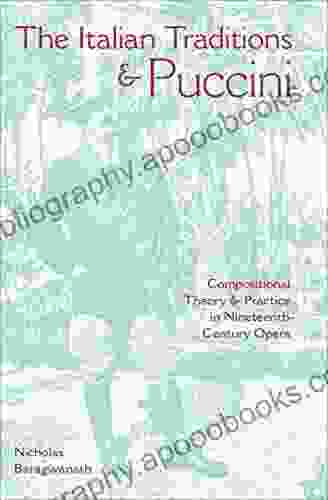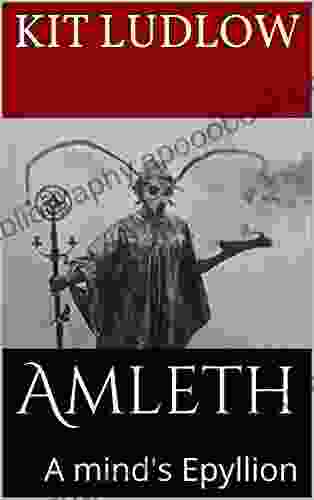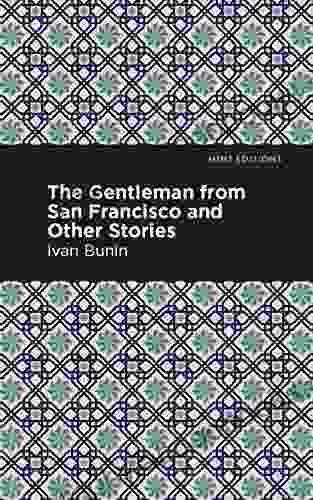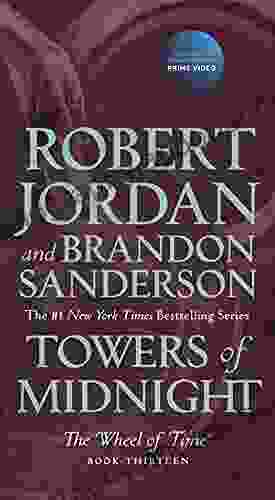Compositional Theory and Practice in Nineteenth-Century Opera: A Journey of Innovation and Evolution

4.6 out of 5
| Language | : | English |
| File size | : | 12580 KB |
| Text-to-Speech | : | Enabled |
| Screen Reader | : | Supported |
| Enhanced typesetting | : | Enabled |
| Print length | : | 438 pages |
| Lending | : | Enabled |
: The Birth of a Golden Age
The nineteenth century witnessed a golden age of opera, marked by a proliferation of masterpieces that continue to captivate audiences worldwide. Composers such as Verdi, Wagner, and Puccini pushed the boundaries of the art form, revolutionizing its musical language and dramatic impact.
At the heart of this extraordinary era lay a profound understanding of compositional theory. Opera composers possessed a mastery of harmony, counterpoint, and orchestration, enabling them to craft works of unparalleled sonic beauty and emotional depth.
The Italian Bel Canto Tradition: Melodic Soaring and Vocal Virtuosity
Italian opera in the early nineteenth century was dominated by the bel canto tradition, which emphasized beautiful singing and elaborate vocal ornamentation. Composers like Rossini and Bellini composed melodies that soared with ethereal grace, showcasing the virtuosity of the human voice.
Key characteristics of bel canto included:
- Extensive use of vocal melismas
- Emphasis on vocal purity and flexibility
- Ornate and elaborate ornamentation
The German Romantic Tradition: Dramatic Depth and Orchestral Power

In Germany, a parallel tradition of opera emerged, characterized by its emphasis on dramatic intensity, rich orchestral textures, and intricate harmonies. Composers such as Weber, Meyerbeer, and Wagner created works that explored the depths of human emotion and pushed the boundaries of musical expression.
Key elements of the German Romantic tradition:
- Extended use of leitmotifs (recurring musical themes associated with specific characters or ideas)
- Complex and dissonant harmonies
- Innovative orchestration techniques, including the use of expanded instrumental forces
The Role of Harmonic Analysis: Unveiling the Hidden Architecture of Music
To fully appreciate the compositional genius of nineteenth-century opera, it is essential to delve into the realm of harmonic analysis. Harmony is the study of the relationships between chords, and its understanding provides a deep insight into the composer's intentions and the emotional impact of the music.
Harmonic analysis techniques reveal:
- The underlying chord progressions that shape the music
- The use of chromaticism and dissonance to create tension and resolution
- The modulations and key changes that create dramatic shifts in mood
Orchestration Techniques: The Art of Painting with Sound
In the hands of skilled composers, the orchestra became a powerful tool for expressing emotion and creating immersive musical experiences. Nineteenth-century opera witnessed a remarkable evolution in orchestration techniques, as composers sought to harness the full potential of the orchestral palette.
Orchestration techniques used in nineteenth-century opera:
- Expanded use of brass and woodwind instruments, enriching the orchestral sound
- of new instruments like the saxophone and the tuba, expanding the expressive range
- Thematic development through orchestration, enhancing musical coherence
Case Studies: Unraveling the Mysteries of Masterpieces
To delve deeper into the practical application of compositional theory and practice, let us examine two iconic operas from the nineteenth century:
- Verdi's La Traviata: A masterpiece of bel canto, renowned for its soaring melodies and poignant vocal lines.
- Wagner's Tristan und Isolde: A groundbreaking work of the German Romantic tradition, featuring complex harmonies, leitmotifs, and a lush orchestral tapestry.
Through in-depth analysis of these operas, we gain invaluable insights into the compositional techniques and expressive power that defined the golden age of nineteenth-century opera.
: A Legacy of Musical Inspiration
The compositional theory and practice employed in nineteenth-century opera continue to influence composers and music lovers alike. The innovative techniques and groundbreaking ideas of this era have left an inde
4.6 out of 5
| Language | : | English |
| File size | : | 12580 KB |
| Text-to-Speech | : | Enabled |
| Screen Reader | : | Supported |
| Enhanced typesetting | : | Enabled |
| Print length | : | 438 pages |
| Lending | : | Enabled |
Do you want to contribute by writing guest posts on this blog?
Please contact us and send us a resume of previous articles that you have written.
 Book
Book Novel
Novel Page
Page Chapter
Chapter Text
Text Story
Story Genre
Genre Reader
Reader Library
Library Paperback
Paperback E-book
E-book Magazine
Magazine Newspaper
Newspaper Paragraph
Paragraph Sentence
Sentence Bookmark
Bookmark Shelf
Shelf Glossary
Glossary Bibliography
Bibliography Foreword
Foreword Preface
Preface Synopsis
Synopsis Annotation
Annotation Footnote
Footnote Manuscript
Manuscript Scroll
Scroll Codex
Codex Tome
Tome Bestseller
Bestseller Classics
Classics Library card
Library card Narrative
Narrative Biography
Biography Autobiography
Autobiography Memoir
Memoir Reference
Reference Encyclopedia
Encyclopedia Chikako Ozawa De Silva
Chikako Ozawa De Silva David Swinden
David Swinden Maureen Connors Santelli
Maureen Connors Santelli Frances Widdowson
Frances Widdowson The Detection Club
The Detection Club Jesse Trushenski
Jesse Trushenski Deborah Paredez
Deborah Paredez Lloyd Pettiford
Lloyd Pettiford Fiona Leitch
Fiona Leitch Nikki Moustaki
Nikki Moustaki Joan Wile
Joan Wile Kenneth Rosenberg
Kenneth Rosenberg Frances Liardet
Frances Liardet Richard Appignanesi
Richard Appignanesi Francis Beckett
Francis Beckett Dazjon Tinae
Dazjon Tinae Michel Le Breton
Michel Le Breton Michael Donaghy
Michael Donaghy David Sheerin
David Sheerin Linda Polman
Linda Polman
Light bulbAdvertise smarter! Our strategic ad space ensures maximum exposure. Reserve your spot today!

 Greg FosterEmpower Your Teaching with The Holistic Curriculum: Cultivating Well-Rounded...
Greg FosterEmpower Your Teaching with The Holistic Curriculum: Cultivating Well-Rounded... Ibrahim BlairFollow ·7k
Ibrahim BlairFollow ·7k Cristian CoxFollow ·8.5k
Cristian CoxFollow ·8.5k Aldous HuxleyFollow ·15.6k
Aldous HuxleyFollow ·15.6k Easton PowellFollow ·18.7k
Easton PowellFollow ·18.7k Shane BlairFollow ·4.2k
Shane BlairFollow ·4.2k Eric NelsonFollow ·8.7k
Eric NelsonFollow ·8.7k Vincent MitchellFollow ·14.5k
Vincent MitchellFollow ·14.5k Ezekiel CoxFollow ·13.3k
Ezekiel CoxFollow ·13.3k

 Finn Cox
Finn CoxEmpowering School-Based Professionals: A Comprehensive...
: The Role of School-Based Professionals in...
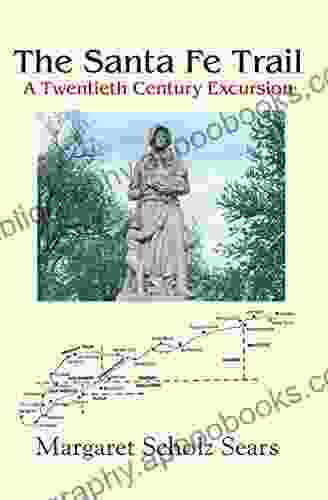
 F. Scott Fitzgerald
F. Scott FitzgeraldThe Santa Fe Trail Twentieth Century Excursion: A...
Get ready to embark on an...
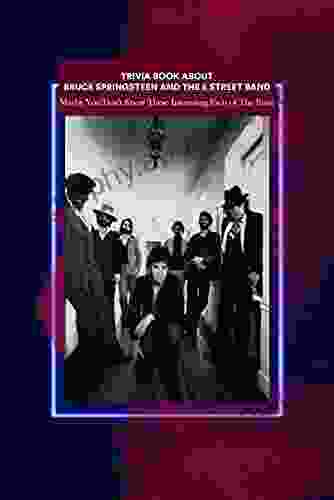
 Kendall Ward
Kendall WardThe Ultimate Trivia Guide to Bruce Springsteen and the...
Bruce Springsteen...

 Jedidiah Hayes
Jedidiah HayesThe Trouble with Lacy Brown: Texas Matchmakers - A...
Prepare to be swept...
4.6 out of 5
| Language | : | English |
| File size | : | 12580 KB |
| Text-to-Speech | : | Enabled |
| Screen Reader | : | Supported |
| Enhanced typesetting | : | Enabled |
| Print length | : | 438 pages |
| Lending | : | Enabled |


